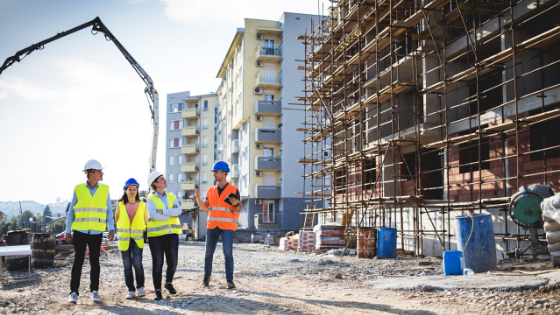There are potential risks in every industry, but the dangers looming in the construction industry can lead to severe injuries or even death. Construction accidents aren’t usually an isolated occurrence, and they’re typically a result of a series of other events. Worst of all, these accidents tend to result in groups of people being injured.
Continue reading to learn about the most common types of construction accidents and how you can remain safe.
Falls
Falls are one of the most commonly reported accidents in construction sites. This type of injury is split into two categories, which are falls from heights and falls on the same level (slips and trips). Falls from heights are the leading cause of fatalities in the industry, while falls on the same level are one of the leading causes of injuries.
Unfortunately, many construction workers are desensitized to fall hazards because of how commonplace they’ve become. There are too many risks to look out for, such as floor and roof openings, surfaces without stable support structures, and dependence on scaffolds and ladders.
There are several steps an employer can take to prevent employees from falling, including:
- Making sure all work areas are well lit
- Keeping all work areas free from clutter
- Ensuring workers are wearing proper footwear with traction
- Keeping up to date with safety regulations for ladders, scaffolds, and roofs
- Training their employees a few times a year on company safety measures
Electrocution
Electrocution can cause severe injuries like nerve damage, muscular contractions, and cardiac arrest. However, burns are the most common shock-related injury in construction sites. These injuries usually result from unsafe equipment or installation, a hazardous environment, and reckless work practices. ]The Occupational Safety and Health Administration (OSHA) enforces healthy working conditions to protect employees. OSHA’s regulations for electrical hazards focus on the design and use of electrical equipment, and it covers requirements for construction and installation.
Proper insulation, guarding, and enforcing safe work practices can help reduce these injuries. Employees who work with electrical equipment must follow basic protocols, including:
- De-energizing equipment when it’s not in use
- Using lockout and tag procedures to ensure the equipment remains de-energized
- Using the required personal protective equipment, which must be provided by the employer
- Maintaining a safe distance from energized parts
Struck by an Object
The term “struck by” is defined by OSHA as injuries resulting from forcible contacts, such as a tool falling from a higher level. It also covers injuries resulting from a large piece of equipment, like when a forklift hits an employee.
Avoid these injuries by wearing the appropriate protective equipment, such as hardhats and safety goggles. Employees must also remain aware of their surroundings and minimize distractions. Make sure you’re doing the following:
- Avoid positioning yourself between moving and fixed objects
- Stay clear of lifted or suspended loads
- Avoid driving a vehicle in reverse gear
Contact Flickinger • Boulton • Robson • Weeks
Although all companies must abide by OSHA regulations, some employers don’t bother because they’re more interested in saving money. If you were involved in a workplace accident, you can hold your negligent employer accountable and receive the compensation you deserve. Contact Flickinger • Boulton • Robson • Weeks to work with an experienced personal injury attorney. We will evaluate your case for free.



